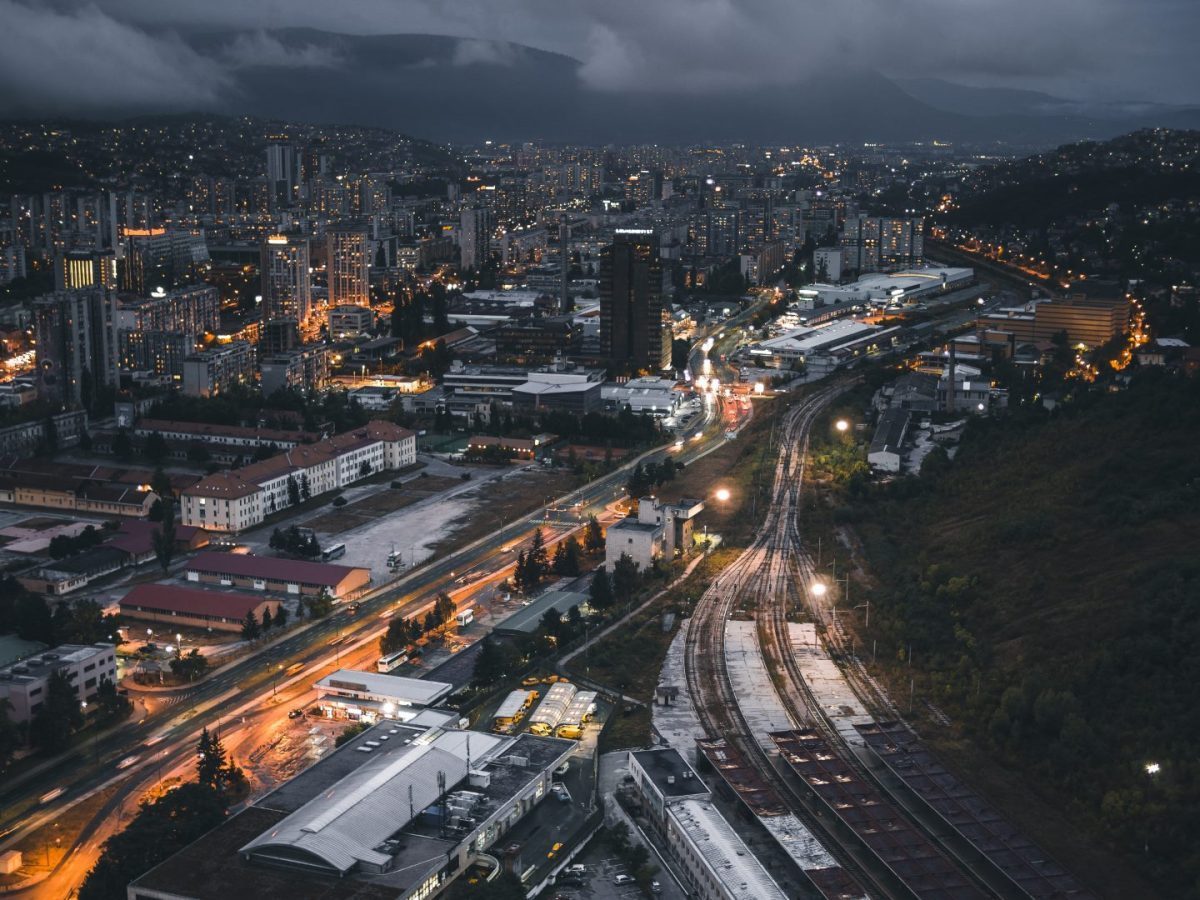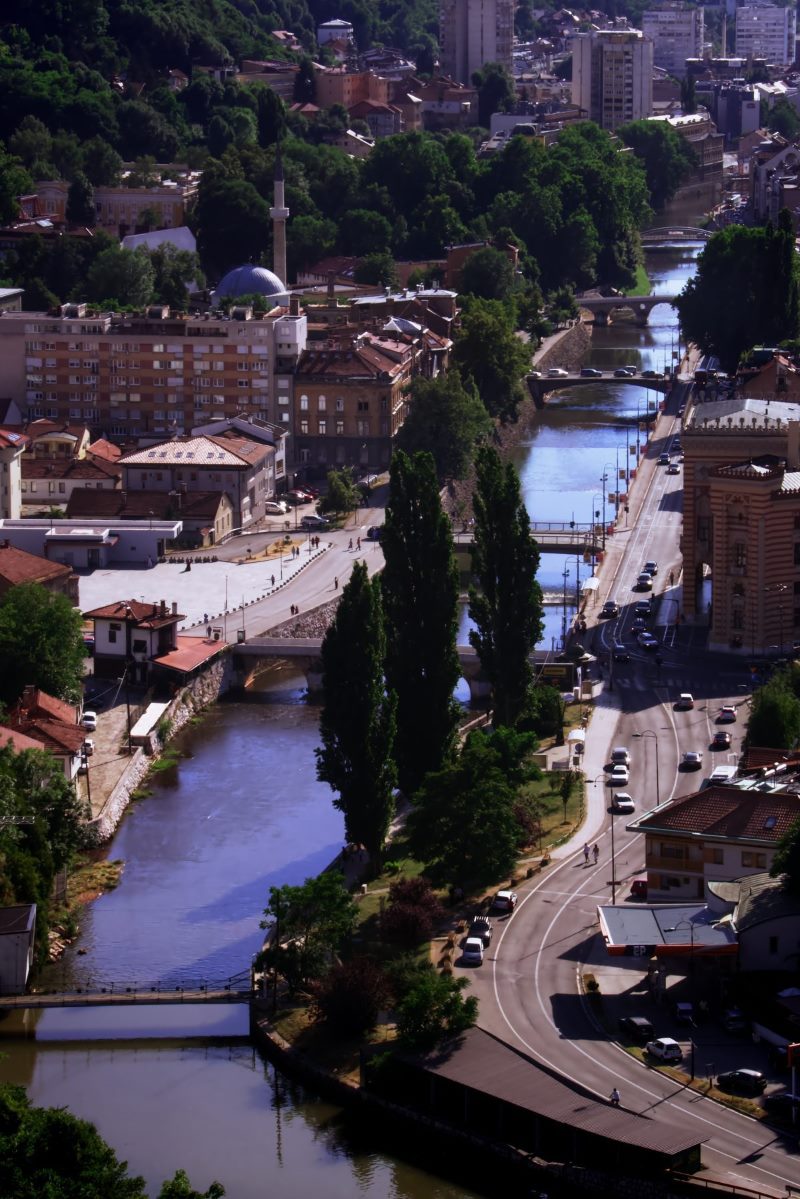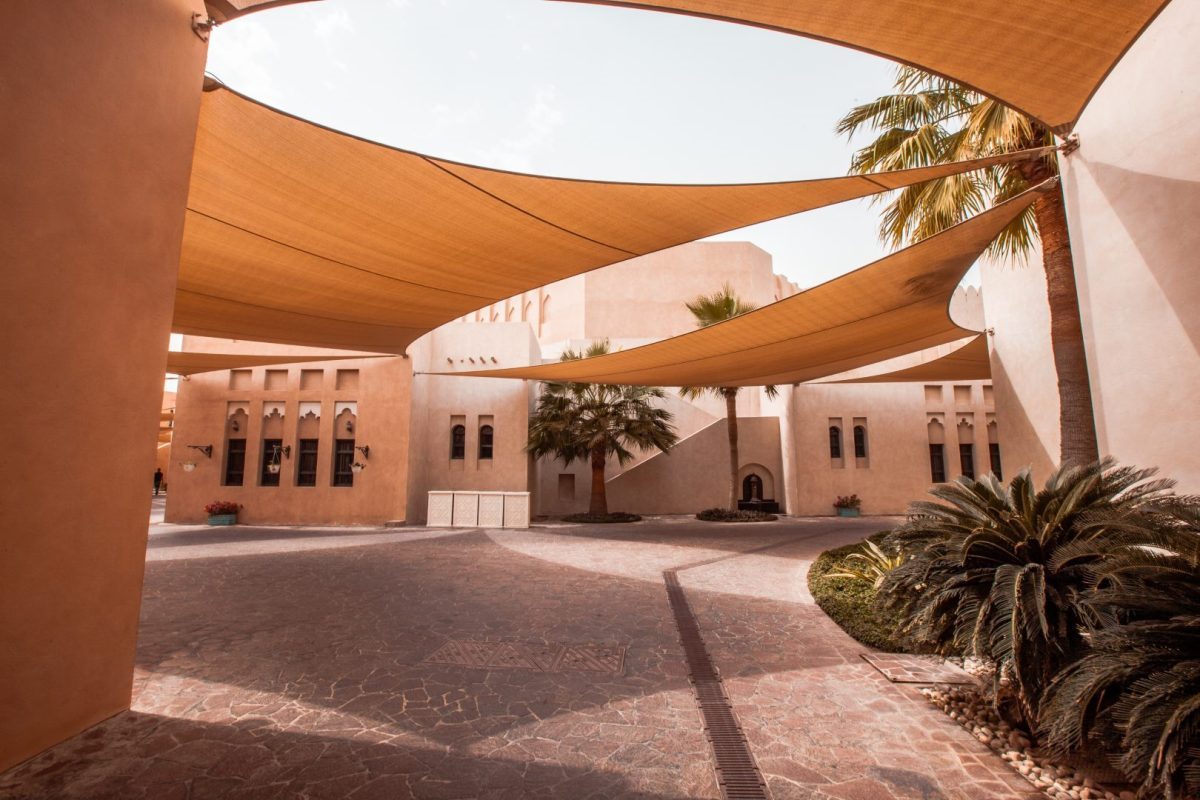How to Plan Your Sarajevo: Times of Misfortune War Tour with Tunnel Museum
Sarajevo is a city with a rich history and a promising future. For those interested in gaining an insight into the times of misfortune that this city and its people endured, a tour of the city’s most important war monuments is an absolute must. This is where the Sarajevo: Times of Misfortune War Tour with Tunnel Museum comes into play, offering visitors the opportunity to walk in the steps of those Sarajevans who lived through and fought for their city during the Balkan Wars. The 3-hour coach tour provides guests in-depth knowledge of the history and culture of Sarajevo during the war-time period. Below is the full description of the tour and how you can book it today.Experience
The tour is helmed by guides with personal experience of the war, giving you an authentic insight into the collapse of Yugoslavia, the war’s objectives, and the plans for its division. Guests will board a comfortable coach that will take them to some of the city’s most important monuments and war locations. The tour is designed to provide visitors with an opportunity to educate themselves on a time when conflict defined this city and its people’s lives.Highlights
The following are some of the highlights of the Sarajevo: Times of Misfortune War Tour:See the Yellow Fortress for One of the Best Panoramas of Sarajevo
At the Yellow Fortress, visitors will stand in awe and appreciate the city’s beauty from the height. The fortress will treat you to some of the best panoramic views of Sarajevo, one of the most captivating European cities defined by its diverse and vibrant cultures.Go to the Markale Market Place
In February 1994, Markale Market was targeted by a mortar shell that killed 68 and wounded 144 people buying meat, vegetables, and other commodities. This brutal attack was one of the many that the war-weary city of Sarajevo endured during the conflict. The market today is a solemn reminder of the price civilians were paying during the war.Admire Buildings from the Winter Olympics
Sarajevo hosted the Winter Olympics in 1984, a time that the locals remember fondly. Visitors to the Sarajevo: Times of Misfortune War Tour will view the stadium and other significant buildings used during the games.Discover Where Sniper Alley Is
Sniper Alley was a treacherous stretch of road that Serb forces used to target and terrorize Sarajevans attempting to cross the city. The tour will take you through this notorious landmark, providing insights into the many terrors that took place there.Visit the Sarajevo War Tunnel Museum
The Sarajevo War Tunnel Museum is perhaps the tour’s most critical location. The tunnel was a lifeline that fed the city and its inhabitants with much-needed goods and provisions and an escape route for citizens during the siege of Sarajevo. Today, the tunnel is a museum that houses exhibitions and photographic material that shows just how the tunnel helped the city survive.Full description
The Sarajevo: Times of Misfortune War Tour is a 3-hour coach tour designed to provide visitors with an insight into what Sarajevans lived through from 1992-1995 during the Balkan wars. The tour starts by visiting the popular Yellow Fortress and the Maternity hospital, where visitors will learn vital information about the city’s defenders. On your way to the war tunnel, the tour will pass through the legendary sniper alley, where visitors will gain knowledge of the atrocities committed to Sarajevans attempting to cross the city. Visitors will also visit the cemetery of the heroes who bravely stood unarmed in defence of their city, giving their lives for its freedom. The tour’s focus is on what life was like without food, water, electricity, and gas, how children kept up with their school work, and what the cultural and sports life was like during the war. The guides with personal experience of the war will provide stories and insights into the collapsed Yugoslavia, the war’s objectives, and the planned division of Sarajevo.Booking
The Sarajevo: Times of Misfortune War Tour with Tunnel Museum is an absolute must for anyone visiting Sarajevo or the surrounding areas. You can book the tour here: book the tour here. The tour is suitable for all ages and has commentary in English. The bus departs from the meeting point in front of the Eternal Flame monument at the beginning of Ferhadija street.Book Your Tour Now
The Sarajevo: Times of Misfortune War Tour with Tunnel Museum is a unique opportunity to gain an insight into what Sarajevans suffered through during the conflict-ridden times of the 90s. The tour provides knowledge and stories that make the city’s history come alive. It is a must for anyone who wants to learn more about the city’s past and is curious about the city’s resilience, spirit, and determination to survive.
Frequently Asked Questions About Sarajevo
Sarajevo is the capital city of Bosnia and Herzegovina. Known for its rich culture, history, and beautiful scenery, Sarajevo attracts visitors from around the globe. Whether you’re planning a trip to the city or just curious about what to expect, we’ve put together a list of frequently asked questions and their answers to help you understand the city better.1. What is the history of Sarajevo?
Sarajevo is a city with a long and complicated history that dates back to the Neolithic period. Throughout the centuries, it has been ruled by various powers, including the Ottomans, Austro-Hungarians, and Communists. However, the city is best known for the assassination of Archduke Franz Ferdinand of Austria, which sparked World War I. In the 1990s, the city was also at the center of the Bosnian War, which resulted in significant destruction and loss of life.2. What are the must-see attractions in Sarajevo?
Sarajevo is a city full of cultural and historical sites that are worth visiting. Some of the most popular attractions include the Old Town, also known as Bascarsija, the Gazi Husrev-beg Mosque, the Sarajevo City Hall, and the National Museum of Bosnia and Herzegovina. If you’re interested in learning more about the city’s recent history, the Tunnel of Hope Museum is a must-visit. The museum tells the story of the tunnel that was used to smuggle goods and people during the siege of Sarajevo in the 1990s.3. What is the food like in Sarajevo?
Sarajevo is known for its delicious and hearty cuisine. Some of the most popular dishes include cevapi, a type of grilled meat served with onions and flatbread, burek, a pastry filled with meat, cheese, or spinach, and pita, a type of pastry usually filled with beef, potatoes, or spinach. For dessert, try the baklava, a sweet pastry made of layers of filo filled with chopped nuts and honey syrup. You can find these dishes in most traditional Bosnian restaurants.4. What is the best time to visit Sarajevo?
The best time to visit Sarajevo is during the spring and autumn months, from April to June and from September to November. During these months, the weather is mild, and the city is less crowded than during the summer months. However, if you’re planning to visit during the winter, you’ll be able to enjoy the city’s snowy landscapes and winter sports, such as sledding and skiing.5. Is it safe to travel to Sarajevo?
Sarajevo is generally a safe city to travel to. However, it is always a good idea to take basic precautionary measures, such as being aware of your surroundings, avoiding dark and deserted places, and staying away from political demonstrations. Pickpocketing is the most common crime in Sarajevo, so it’s wise to keep an eye on your belongings, especially in crowded areas.6. What are the transportation options in Sarajevo?
Sarajevo has a well-developed public transportation system, including trams, buses, and trolleybuses. You can purchase tickets at kiosks or on board the vehicles. Taxis are also available but make sure to agree upon a price before getting in the vehicle. You can also explore the city on foot or by bike, as there are several bike rental services available.7. What are the cultural norms in Sarajevo?
Sarajevo is a multicultural city, with a mix of Bosniak, Croat, and Serb communities. When it comes to cultural norms, it’s essential to be respectful and courteous to all people, regardless of their religion or ethnicity. Dress modestly when visiting mosques or other religious sites, and avoid public displays of affection. It’s also polite to greet people with the local greeting “Dobar dan” (Good day) or “Zdravo” (Hello).8. What is the nightlife like in Sarajevo?
Sarajevo has a vibrant nightlife, with plenty of bars and clubs to choose from. Some of the most popular areas to go out at night include the Sarajevo Center, Bascarsija, and the Old Town. However, it’s worth noting that Bosnia is a predominantly Muslim country, so alcohol consumption is not as prevalent as in other European countries. Most bars and clubs close around 2 am.9. What is the currency used in Sarajevo?
The currency used in Sarajevo is the Bosnian Convertible Mark (BAM). One BAM is approximately 0.60 euros or 0.70 US dollars. You can exchange your currency at banks or exchange offices, or use ATMs to withdraw money. Credit cards are also accepted in most businesses, but it’s always a good idea to have some cash on hand, especially when visiting smaller shops or restaurants. In conclusion, Sarajevo is a city full of culture, history, and delicious cuisine. By following these frequently asked questions, you’ll have a better understanding of what to expect when visiting the city. Don’t forget to pack comfortable shoes and your camera, as there will be plenty of sights to see and memories to make!
How to Spend your Time as a Tourist in Sarajevo
If you are planning to visit Sarajevo, the capital city of Bosnia and Herzegovina, you are in for a treat. This culturally rich city is known for its historical significance, natural beauty, delicious food, and friendly locals. Here are some tips on how to spend your time as a tourist in Sarajevo.1. Take a Walking Tour of the Old Town
Sarajevo’s Old Town or Bascarsija is the heart of the city and a must-visit attraction. It is a maze of narrow streets, alleys, and markets that have been around since the Ottoman Empire. Taking a walking tour of the Old Town will give you an opportunity to learn about the city’s history, architecture, and culture. You can find guided tours or self-guided audio tours at the tourist information center in the Old Town.2. Visit the Historical Museums
Sarajevo has a rich and diverse history that is well documented in its museums. There are several historical museums in the city that are worth visiting, such as the Museum of Sarajevo, which showcases the city’s history, and the War Childhood Museum, which tells the stories of children who lived through the war in the 1990s. Visit these museums to better understand the city’s past and present.3. Stroll Along the Miljacka River
The Miljacka River runs through the city, dividing it into two parts. Taking a stroll along the riverbank is a great way to see the city’s bridges, parks, and architecture. The most famous bridge in Sarajevo is the Latin Bridge, located in the Old Town, where the assassination of Archduke Franz Ferdinand took place, leading to the outbreak of World War I.4. Enjoy Bosnian Cuisine
Bosnian cuisine is a blend of Ottoman and Austro-Hungarian influences and offers a unique culinary experience. Some of the must-try dishes include cevapi (grilled minced meat), burek (pastry filled with meat or cheese), and baklava (pastry with nuts and honey). You can find these dishes at local restaurants and cafes in the Old Town or other parts of the city.5. Take a Day Trip to the Surrounding Area
Sarajevo is located in a stunning natural setting, surrounded by mountains and forests. Take a day trip to the surrounding area to explore the countryside and enjoy outdoor activities such as hiking, skiing, or rafting. Some popular day trip destinations include the Olympic mountain of Jahorina, the medieval town of Visegrad, and the stunning Kravice Waterfalls.6. Visit Religious Sites
Sarajevo is a city that is known for its religious diversity. It is home to mosques, churches, and synagogues, which reflect the city’s multicultural and multireligious history. Some of the religious sites that you can visit include the Gazi Husrev-beg Mosque, the Catholic Cathedral of the Sacred Heart, and the Jewish Museum of Bosnia and Herzegovina.7. Attend a Cultural Event
Sarajevo is known for its vibrant arts and culture scene, with events taking place throughout the year. Some of the cultural events that you can attend include the Sarajevo Film Festival, the Sarajevo Jazz Festival, and the Sarajevo Winter Festival. Check the local events calendar to see what events are taking place during your visit.8. Shop at the Markets
Sarajevo’s markets are a shopper’s paradise. The city is known for its traditional crafts, such as copper smithing, wood carving, and rug weaving, which can be found at the markets. The main markets that you can visit include the Old Town Market, the Coppersmiths’ Street, and the Bascarsija Nights Market.Book Your Tour Now
Sarajevo is a city that offers a rich cultural experience, historical significance, and natural beauty. By taking a walking tour of the Old Town, visiting the historical museums, strolling along the Miljacka River, enjoying Bosnian cuisine, taking a day trip to the surrounding area, visiting religious sites, attending cultural events, and shopping at the markets, you will get a chance to explore the city’s diverse offerings. As a tourist in Sarajevo, you are in for an unforgettable experience.Table of Contents

